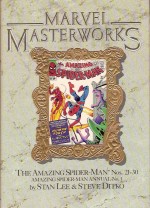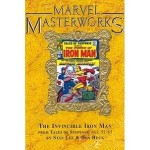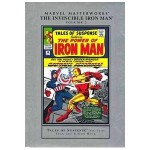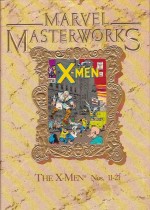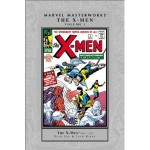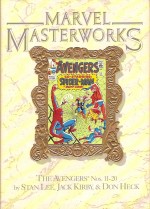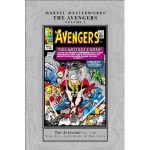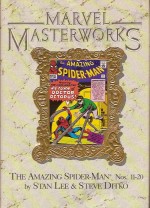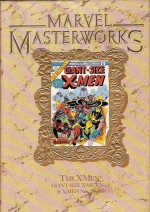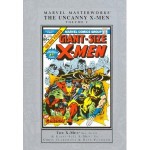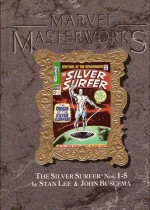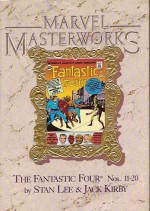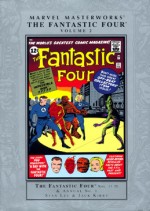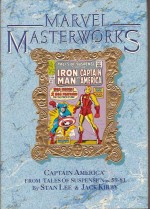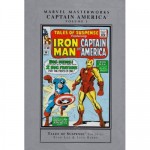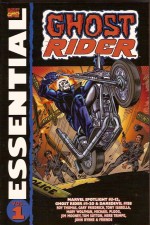
By Roy Thomas, Gary Friedrich, Mike Ploog, Jim Mooney, John Byrne & various (Marvel)
ISBN: 978-0-7851-1838-1
At the end of the 1960s American comicbooks were in turmoil, much like the youth of the nation they targeted. Superheroes had dominated for much of the decade; peaking globally before explosively falling to ennui and overkill. Older genres such as horror, westerns and science fiction returned, fed by radical trends in movie-making where another, new(ish) wrinkle had also emerged: disenchanted, rebellious, unchained Youth on Motorbikes seeking a different way forward.
Green Lantern/Green Arrow, Jack Kirby’s Jimmy Olsen, Captain America and many others all took the “Easy Rider†option to boost flagging sales (and if you’re interested the best of the crop was Mike Sekowsky’s tragically unfinished mini-masterpiece of cool Jason’s Quest in Showcase). Over at Marvel, a company still reeling from Kirby’s defection to DC/National in 1970, canny Roy Thomas green-lighted a new character who combined the freewheeling, adolescent-friendly biker-theme with the all-pervasive supernatural furore gripping the entertainment fields.
Back in 1967, Marvel published a western masked hero named Ghost Rider: a shameless, whole-hearted appropriation of the cowboy hero creation of Vince Sullivan, Ray Krank & Dick Ayers (Magazine Enterprises from 1949 to 1955), who utilised magician’s tricks to fight bandits by pretending to be an avenging phantom of justice.
Scant years later with the Comics Code prohibition against horror hastily rewritten – amazing how plunging sales can affect ethics – scary comics came back in a big way and a new crop of supernatural superheroes and monsters began to appear on the newsstands to supplement the ghosts, ghoulies and goblins already infiltrating the once science-only scenarios of the surviving mystery men titles.
In fact the lifting of the Code ban resulted in such an en masse creation of horror titles (new stories and reprints from the first boom of the 1950s), in response to the industry-wide down-turn in superhero sales, that it probably caused a few more venerable costumed crusaders to (temporarily, at least) bite the dust.
Almost overnight nasty monsters (and narcotics – but that’s another story) became acceptable fare within four-colour pages and whilst a parade of pre-code reprints made sound business sense the creative aspect of the contemporary fascination in supernatural themes was catered to by adapting popular cultural icons before risking whole new concepts on an untested public.
As always in entertainment, the watch-world was fashion: what was hitting big outside comics was to be incorporated into the mix as soon as possible.
When proto-monster Morbius, the Living Vampire debuted in Amazing Spider-Man #101 (October 1971) and the sky failed to fall in, Marvel moved ahead with a line of shocking superstars – beginning with a werewolf and a vampire – before chancing something new with a haunted biker who could tap into both Easy Rider‘s freewheeling motorcycling chic and the supernatural zeitgeist.
The all-new Ghost Rider debuted in Marvel Spotlight #5, August 1972 (preceded by western hero Red Wolf in #1 and the aforementioned Werewolf By Night).
This copious compendium collects in moody monochrome the earliest exploits adventures from Marvel Spotlight #5-12, Ghost Rider #1-20 and an horrific crossover with Daredevil #138, beginning with that landmark first appearance which introduced stunt biker Johnny Blaze, his fatally flawed father-figure Crash Simpson and Johnny’s devoted girlfriend: sweet virginal Roxanne Simpson…
‘Ghost Rider’, plotted by Thomas, scripted by Friedrich and stunningly illustrated by Ploog, saw carnival cyclist Blaze sell his soul to the devil in an attempt to save his foster-father Crash from cancer. As is the way of such things, Satan followed the letter but not spirit of the contract and Simpson died anyway, but when the Dark Lord later came for Johnny Roxanne intervened, her purity preventing the Devil from claiming his due. Temporarily thwarted Satan afflicted Johnny with a body that burned with the fires of Hell every time the sun went down…
Haunting the night and terrorising thugs and criminals at first, the traumatised biker soon left the Big City and headed for the solitary deserts where in ‘Angels From Hell’ the flaming skulled fugitive joined a biker gang led by the enigmatic Curly Samuels: a resurrected agent of Satan attempting to destroy the protective Roxanne and claim Blaze.
No prizes for guessing Curly’s true identity then, when the next chapter (inked by Frank Chiaramonte) is entitled ‘Die, Die, My Daughter!’ before the origin epic concluded with a monumental battle against ‘…The Hordes of Hell!’ (with a rather uncomfortable artistic collaboration by Ploog and Jim Mooney) resulting in a torturous Cold War détente between the still nightly-transforming Blaze and Satan, as well as the introduction of a new eldritch enemy in Native American Witch Man Snake-Dance…
Marvel Spotlight #9 saw the tragically undervalued Tom Sutton take over the pencilling – with inks by Chic Stone – for ‘The Snakes Crawl at Night…’ as Medicine Man magic and demonic devil-worship combined to torment Johnny Blaze just as Roxanne went west to look for him. To further confound the cursed cyclist, Satan decreed that although he must feel the pain, no injury would end Johnny’s life until his soul resided in Hell… which came in very handy when Roxanne was sacrificed by Snake-Dance and the Ghost Rider had to battle his entire deviant cult to rescue her…
In #10 ‘The Coming of… Witch-Woman!’ (Friedrich, Sutton & Mooney) opened with Blaze, a fugitive from the police, rushing the dying Roxanne to hospital whilst on the Reservation tensions remained high as Snake-Dance’s daughter Linda Littletrees revealed her own connection to Satan, culminating in a devastating eldritch assault on Blaze in #11’s ‘Season of the Witch-Woman!’ (inked by the incomparable Syd Shores).
That cataclysmic conflict continued into Ghost Rider #1 (September 1973), which further extended the escalating war between Blaze and the devil, whilst introducing a new horror-hero who would take over the biker’s vacant spot in Spotlight.
Linda Littletrees wasn’t so much a Satan-worshipping witch as a ‘A Woman Possessed!’ but when her father and fiancé Sam Silvercloud called Boston-based exorcist Daimon Hellstrom for help, they were completely unprepared for the kind of assistance the demonologist offered.
With Roxanne slowly recovering and Blaze still on the run, issue #2 saw the bedevilled biker dragged down to Hell in ‘Shake Hands With Satan!’ (illustrated by Mooney & Shores) before the saga concluded in Marvel Spotlight #12 with the official debut of ‘The Son of Satan!’ by Friedrich, Herb Trimpe & Frank Chiaremonte, which revealed Daimon Hellstrom’s long-suppressed inner self to be a brutal scion of the Infernal Realm eternally at war with his fearsome father.
The released Prince of Hell swiftly rushed to Blaze’s aid – although more to spite his sire than succour the victim – and, with his own series off to a spectacular start, continued to take the pressure of the flaming-skulled hero. From Ghost Rider #3’s ‘Wheels on Fire’ (Friedrich, Mooney & John Tartaglione) a fresh direction was explored with more mundane menaces and contemporary antagonists such as the thuggish gang of Big Daddy Dawson – who had kidnapped the still frail Roxanne…
Blaze also learned to create a spectral motorcycle out of the Hellfire that perpetually burned through his body: a most useful trick considering the way he got through conventional transport…
Eager to establish some kind of normal life, the still wanted-by-the-cops Blaze accepted a pardon by the State Attorney General in #4’s ‘Death Stalks the Demolition Derby’ (inked by Vince Colletta) in return for infiltrating a Las Vegas showman’s shady operation, leading to another supernatural encounter, this time against a demonic gambler dubbed Roulette in ‘And Vegas Writhes in Flame!’ by the transitional creative team of Marv Wolfman, Doug Moench, Mooney & Sal Trapani.
With #6, ill-considered attempts to convert the tragic biker into a more conventional superhero began with ‘Zodiac II’ (story and concept by Tony Isabella & Friedrich) as Blaze stumbled into a senseless fight with a man who had all the powers of the old Avengers’ arch-foes. However there was a hidden Satanic component to the mystery as Johnny discovered when reformed super-villain turned TV star Stunt-Master turned up to help close the case and watch helplessly as the one-man Zodiac fell-foul of his own diabolical devil’s bargain in ‘…And Lose His Own Soul!’ (Isabella, Mooney & Jack Abel).
A final confrontation – of sorts – began in Ghost-Rider #8 as ‘Satan Himself!’ came looking for Johnny’s soul with a foolproof scheme to force Roxanne to rescind her protection, which she finally did as the Hell-biker battled Inferno, the Fear-demon and most of San Francisco in a game-changing epic called ‘The Hell-Bound Hero!’ wherein Blaze was finally freed from his satanic burden by the intervention of someone who appeared to be Jesus Christ…
The cover of issue #10 (by Ron Wilson and Joe Sinnott, I think) featured Ghost Rider battling the Hulk, but a deadline cock-up delayed that tale until #11 and the already included origin from Marvel Spotlight #5 filled those pages. Gil Kane & Tom Palmer reinterpreted the scene for their cover on next issue which finally detailed ‘The Desolation Run!‘ by Isabella, Sal Buscema, Tartaglione & George Roussos, as Johnny joined a disparate band of dirt-bikers in a desert race which collided with the legendarily solitary and short-tempered Green Goliath, after which artists Frank Robbins, Frank Giacoia & Mike Esposito recounted the fate of World War I fighter ace Phantom Eagle when Blaze tried to unknowingly attempted to rescue the warrior’s murderer from the ‘Phantom of the Killer Skies’…
Ghost Rider #13 declared ‘You’ve Got a Second Chance, Johnny Blaze!’ (Isabella, George Tuska & Colletta) as the terms of the hero’s on-going curse were changed again, just as the dissolute biker headed to Hollywood and a promised job as Stunt-Master’s body-double. No sooner had he signed up however, than Blaze became involved with starlet Karen Page – Daredevil’s one-time girlfriend – and a bizarre kidnap plot by super-villain The Trapster.
Not included here is a yarn where Ghost Rider and Spider-Man battled the demented biker bad-guy The Orb (you’ll need to track down Marvel Team-Up #15 or at least the first Essential Marvel Team-Up volume for that tale) which is a pity as ‘A Specter Stalks the Soundstage!’ features his revenge-hungry return attempt to destroy Blaze which spectacularly concludes with ‘Vengeance on the Ventura Freeway!’ (illustrated by Bob Brown & Don Heck).
Whilst hanging out on the West Coast Blaze joined new superteam The Champions, but they played no part in Bill Mantlo, Tuska & Colletta’s fill-in issue ‘Blood in the Waters’ as the Ghost Rider oh, so topically tangled with a Great White Shark in the gore-soaked California surf before #17 highlighted a team-up with the Son of Satan in ‘Prelude to a Private Armageddon!’ (by Isabella, Robbins & Colletta) wherein fellow stunt-actor Katy Milner was possessed by a demon and only Hellstrom could help.
The saga continued with ‘The Salvation Run!’ as Blaze was forced to race through the bowels of Hell and relive his own traumatic past before finally saving the day, Katy and his own much-tarnished soul in ‘Resurrection’.
All this time the mystery of Karen’s attempted abduction had been percolating through the subplots here, but explosively boiled over in Daredevil #138 as ‘Where is Karen Page?’ (by Wolfman, John Byrne & Mooney) revealed the machinations of criminal maniac Death’s-Head to be merely part of a greater scheme involving Blaze, Stunt-Master, the Man without Fear and the homicidal Death Stalker. The convoluted conundrum cataclysmically climaxed in Ghost-Rider #20 with ‘Two Against Death!’ by Wolfman, John Byrne & Don Perlin…
This spooky, black and white thriller compendium finishes the chilling action with Marvel Universe Handbook pages imparting all the background you could ever desire regarding Johnny Blaze and Daimon Hellstrom to truly complete your fear-filled fun fest.
One final note: backwriting and retcons notwithstanding, the Christian boycotts and moral crusades of a later decade were what compelled the criticism-averse and commercially astute corporate Marvel to “translate†the biblical Satan of these early tales into generic and presumably more palatable or “acceptable†demonic creatures such as Mephisto, Satanish, Marduk Kurios and other equally naff downgrades, but the original intent and adventures of Johnny Blaze – and indeed series spin-offs Daimon Hellstrom and Satana, respectively the Son and Daughter of Satan, tapped into the period’s global fascination with Satanism, Devil-worship and all things Spooky and Supernatural which had begun with such epochal films as Rosemary’s Baby (Roman Polanski’s 1968 film more than Ira Levin’s novel) and remember aren’t your feeble bowdlerised “Hell-lite†horrors.
These tales are about the real-deal Infernal Realm and a good man struggling to save his soul from the baddest of all bargains – as much as the revised Comics Code would allow – so brace yourself, hols steady and accept no supernatural substitutes…
© 1972, 1973, 1974, 1975, 1976, 2005 Marvel Characters, Incorporated. All rights reserved.
